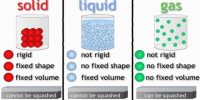Change of Electron Affinity along a Group: On moving down a group, the size of atom increases significantly and hence, the effective nuclear attraction for the electron decreases. Consequently the atom will possess less tendency to attract additional electrons towards itself. It means that electron affinity would decrease as we move down a group. In case of halogens the decrease in electron affinity from chlorine to iodine is due to steady increase in atomic radii from chlorine to iodine.
On moving down a group the electron affinity decreases. Thus, the electron affinity of Cl should be less than F. But actually the electron affinity of F (320 kJ mol-1) is less than Cl (348 kJ mol-1).
The reason for this is probably due to small size of fluorine atom. The addition of an extra electron produces high electron density which increases strong electron-electron repulsion. The repulsive forces between electrons results in low electron affinity.
Electron affinities of noble gases are zero. As these atoms possess ns2 np6 configuration in their valence shells, these are stablest atoms and there are no chances for the addition of an extra electron. Thus, the electron affinities of noble gases are zero.
Electron affinities of beryllium and nitrogen are almost zero. This may be due to the extra stability of the completed 2s-orbital in beryllium and of the exactly half-filled p-orbital in nitrogen. As these are stable electronic configurations, they do not have tendency to accept electrons and therefore, the electron affinities for beryllium and nitrogen are zero.











